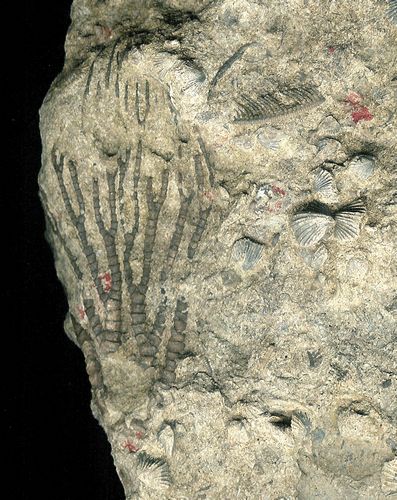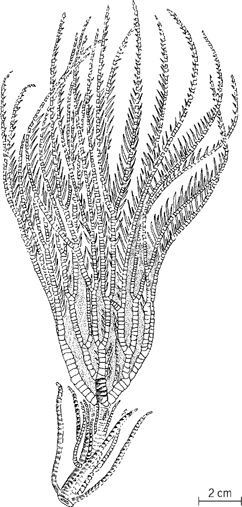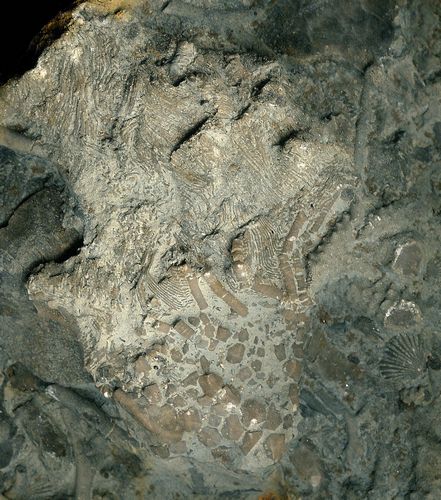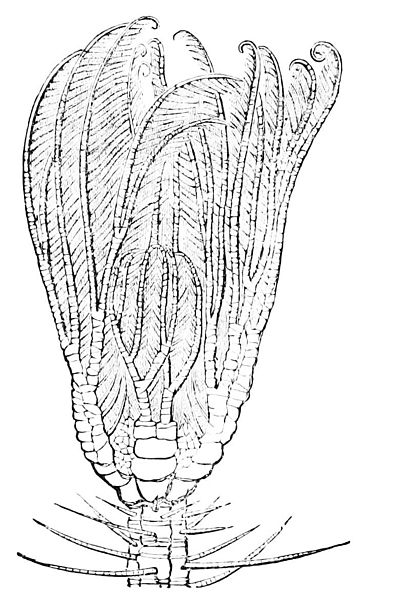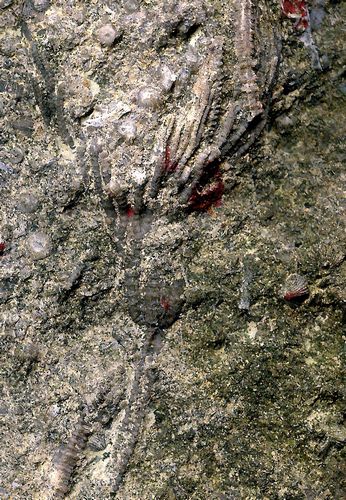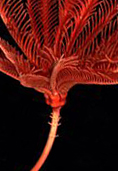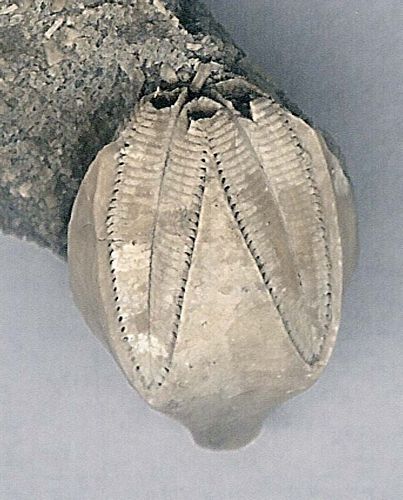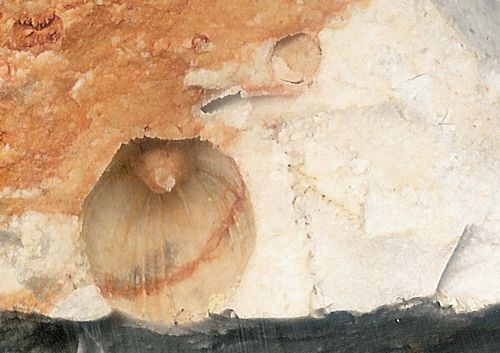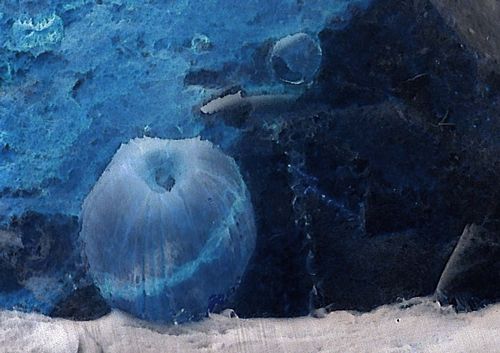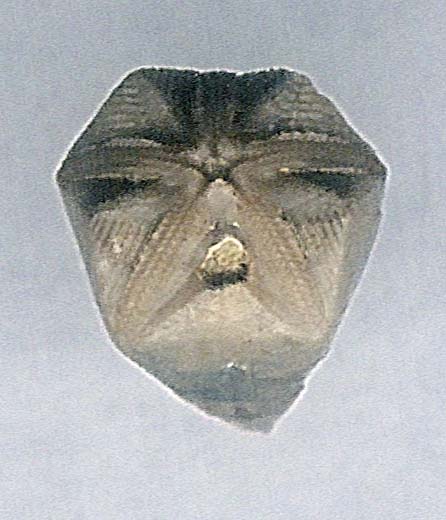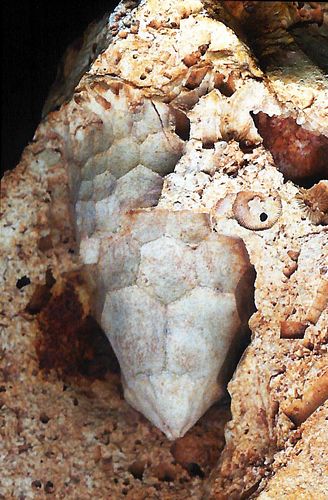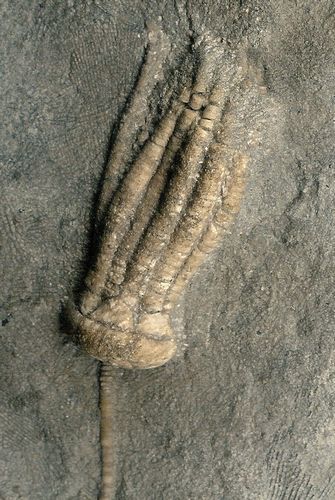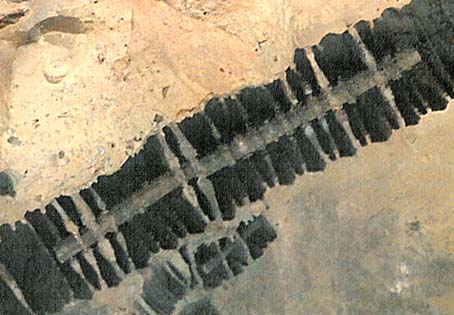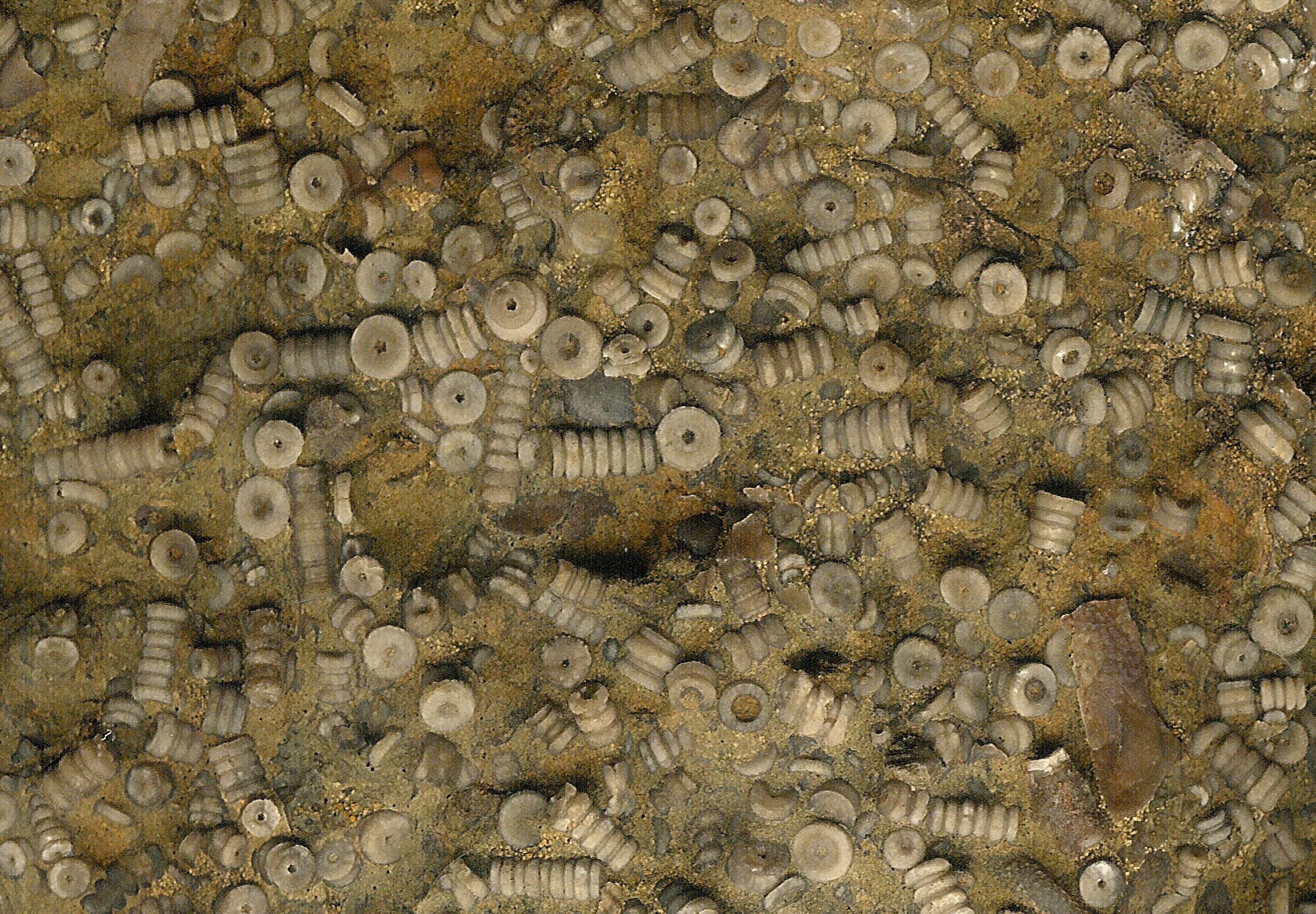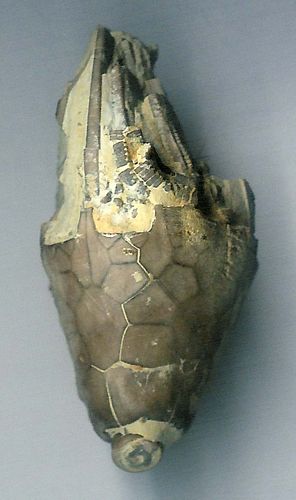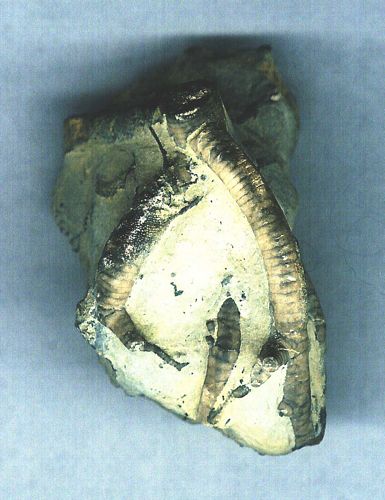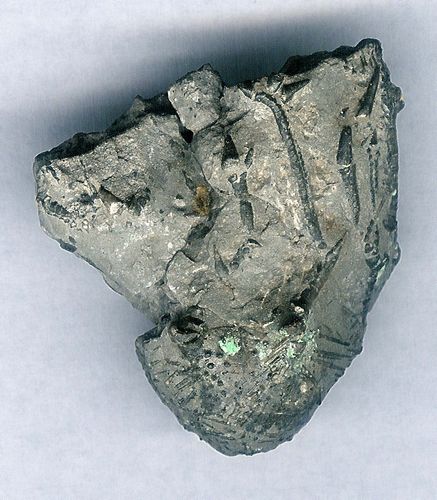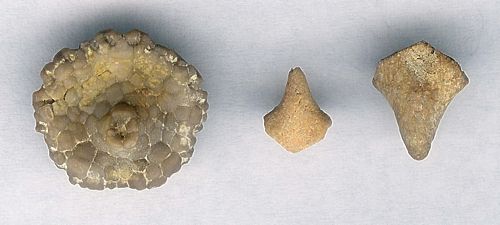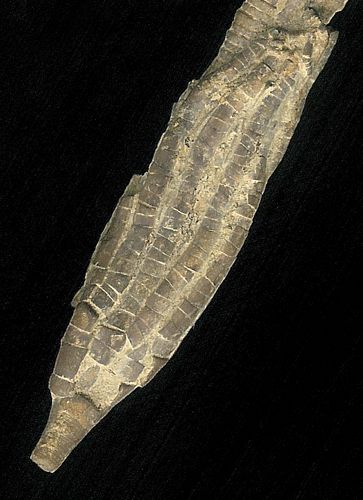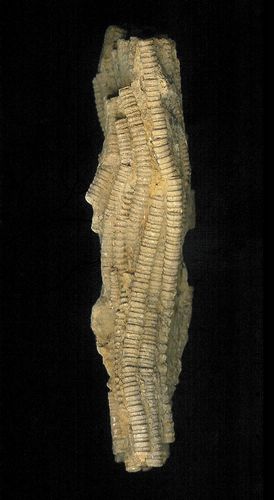|
zoologist, invertebrate biologist, and author of one of the best
textbooks on invertebrates was quoted as saying that the brachiopods
and molluscs had an “excellent, unbroken fossil record,” with most classes living today “already present in the Cambrian.”
–Buchsbaum, R., et al. Animals Without Backbones, 1987, 3rd Ed., p. 520.
A virtually
identical observation is made by another zoologist and invertebrate
biologist, Dr. Rich Mooi, curator of Invertebrate Zoology and Geology
at the California Academy of Sciences, regarding the fossil record of
the echinoderms:
“The fossil record
of the Echinodermata is relatively complete… represented by specimens
retaining an abundance of features comparable to that found in extant
forms.”
–Mooi, R. 2001. Not all written in stone: Interdisciplinary
syntheses in echinoderm paleontology. Canadian Journal Of Zoology
79(7): 1209-31.
“Excellent.”
“Unbroken.” “Relatively complete.” These descriptions do not at all
match what the public has been told about the fossil record, that it is
“a record poorly kept.” This is a very relevant contradiction which
anyone with a scientific mind needs to ponder. If a record is
“excellent” and “unbroken” one can surely conclude that any
transitional forms—if they ever existed—would be as abundant as any
other fossils. Instead, genera, families, orders, classes, and phyla
are all very distinct.
One
way I have proposed to bring biology, paleontology, and anthropology
closer to the open-minded goals of science is the Objective
International 3D Stratigraphic Column project. It involves trillions of
chronological layers with fossils accessible in road cuts, railroad
cuts, quarries, mountainsides, stream cuts, and geological cores across
tens of thousands of miles (those interested can be involved in many
different ways which I hope to describe later). The Column is an
interactive spherical graph literally the size of the earth because it
is the earth. Sequences of fossils can be followed in three or four
dimensions in the field, in books, or on the Internet. The fossils in
the invertebrate record are excellently laid out and preserved with no
need to imagine invisible or unknown creatures, something which has
implications that must be addressed. So far, the facts (not
evolutionary theory) confirm that the oldest of every creature is
‘already’ that creature. To look at this picture objectively, that’s
what science is all about.
__________
John
Feliks has
specialized in the study of early human cognition for twenty years
demonstrating that human cognition does not evolve. Earlier, his focus
was on the invertebrate fossil record studying fossils in the field
across the U.S. and parts of Canada. With increasing attempts to force
evolution on U.S.children as fact while blocking opposing evidence,
Feliks encourages students to insist that science teachers present all
evidence objectively—as it is done in all normal sciences.
|
Genus
|
Former living fossils
|
Range
|
Fossils recovered by the author
|
|
Crinoidea
Several variations on crinoid stems from a single locality
|
Unchanged
488 million years
Ordovician–Recent;
488.3 MYA–Present
|
Worldwide |
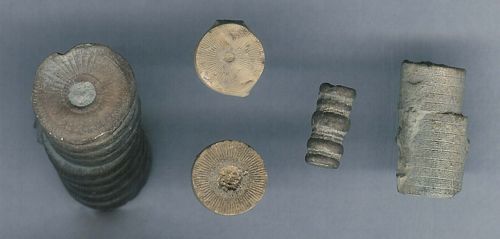
View c. 3 1/2" (9 cm)
Variable crinoid stem sections; Pennsylvanian; Paris, Illinois
|
What were the ancestors of starfish?
Starfish
What Darwin
should have gleaned from his pigeon breeding is only the wide range of
variation possible within an animal type. However, he chose to push an
untenable extrapolation that not only species, but genera, families,
orders, classes, and even phyla, morphed into one another by an imaginary force he called natural selection resulting in the most profound engineering marvels known.
|
Unchanged
450 million years
Ordovician–Recent;
450.0 MYA–Present
“The basic body plan of the asteroids has remained the same since the Ordovician.”
-KE Knott, asteroidea specialist, Univ. of Jyväskylä, Dept. of Biological and Environmental Science
|
Worldwide |
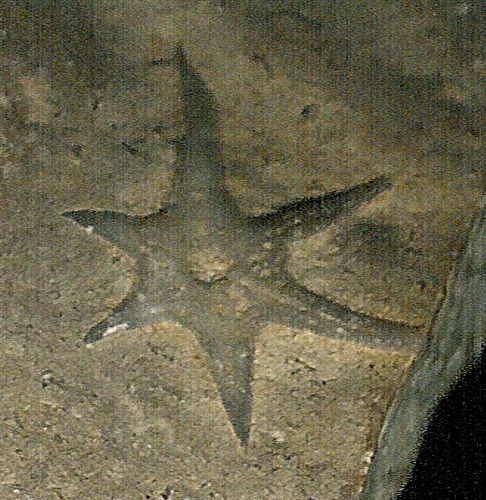 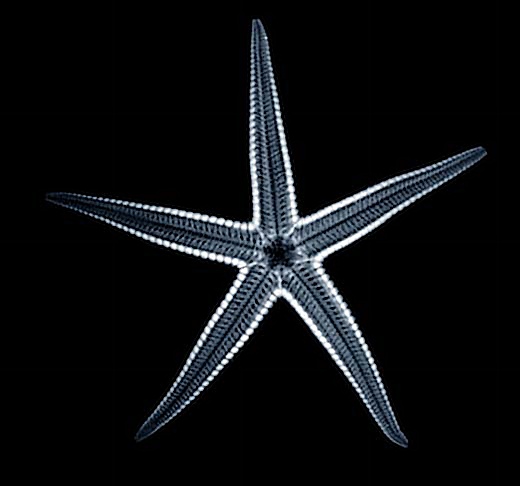
9/16" (1.4 cm)
Left:
Unidentified fossil used here only as a quick placeholder. Being rare
or unknown at all of the formations visited, even over thirty years
time, the author has no confirmed starfish or sea urchins in his
collection. This fossil may well be something like the bryozoan Evactinopora
which is often confused with starfish. The fossil is in slight relief
above the surface. Each ray has what resembles an ambulacral groove
extending from thecenter hole to the tip of the ray. Mississippian; War Eagle, Arkansas. Right: A modern-day starfish (public domain).
|
|
Crinoids and trilobites lived together for 200 million years
|
Unchanged
200 million years
Ordovician–Permian; c. 450.0–252.3 MYA
|
Worldwide |
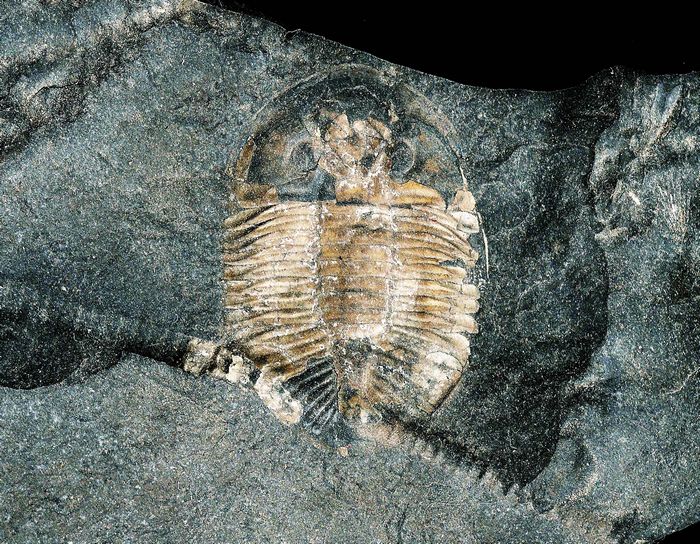
Trilobite 1 3/4" tall (4.5 cm)
Schizocrinus crinoid stem underneath a Pseudogygites trilobite; Ordovician;
rec. from strata by the author; shores of Georgian Bay, Ontario
|
|
Platycrinitidae
crinoid family;
Class Camerata
|
Unchanged
157 million years
Ordovician–Permian;
416.0–259.0
|
Worldwide |
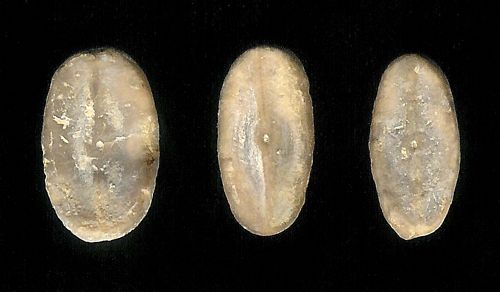
11/16" ea.(1.8 cm)
Platycrinites, elliptical columnals from the unique twisted-stem crinoid; Pennsylvanian;
Paris, Illinois
|
|
Erisocrinoidea
Crinoid superfamily
|
Unchanged
122 million years
Devonian–Permian;
376.1–254 MYA
|
Worldwide |
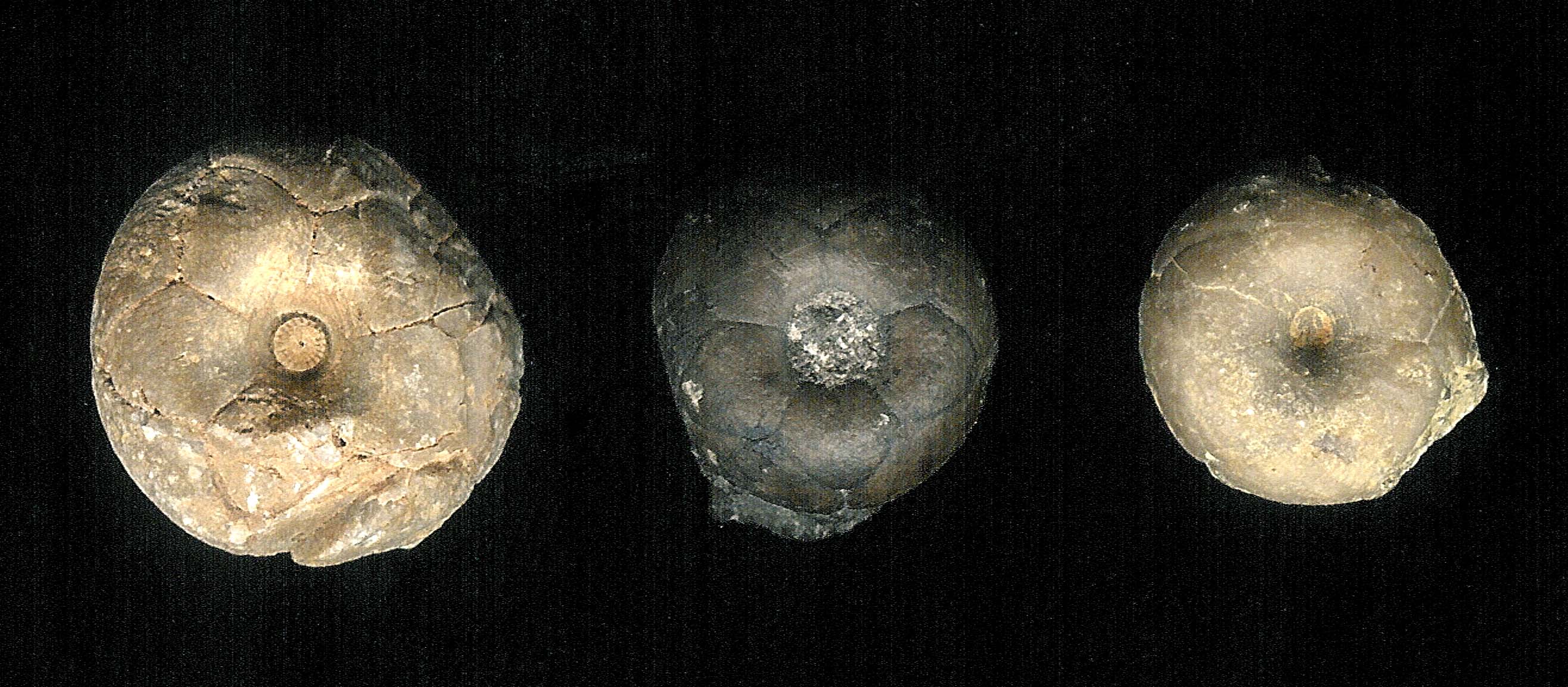
c. 1/2" ea. (1.3 cm)
Delocrinus crinoid cups; Pennsylvanian;
Paris Illinois
|
|
Ancyrocrinus
Crinoid genus with grapnel-style anchor; Subclass Cladida
|
Unchanged
33 million years
Devonian;
416.0–383.7 MYA
|
Worldwide |
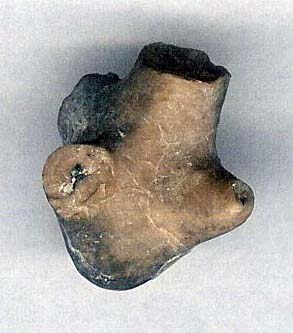
7/8" (2.1cm)
Ancyrocrinus ‘grapnel-style’ anchor; Devonian;
Arkona, Ontario. Another fossil example that many things humans think they invented have been around for hundreds of millions of years.
|
Fig. 6.
One reason biology, paleontology, and anthropology have been able to
spread evolutionism without standard scientific rigor is a public
unfamiliar with the fossil record. Change that and the “evolution is a
fact” story will gradually start to be questioned.
|
|
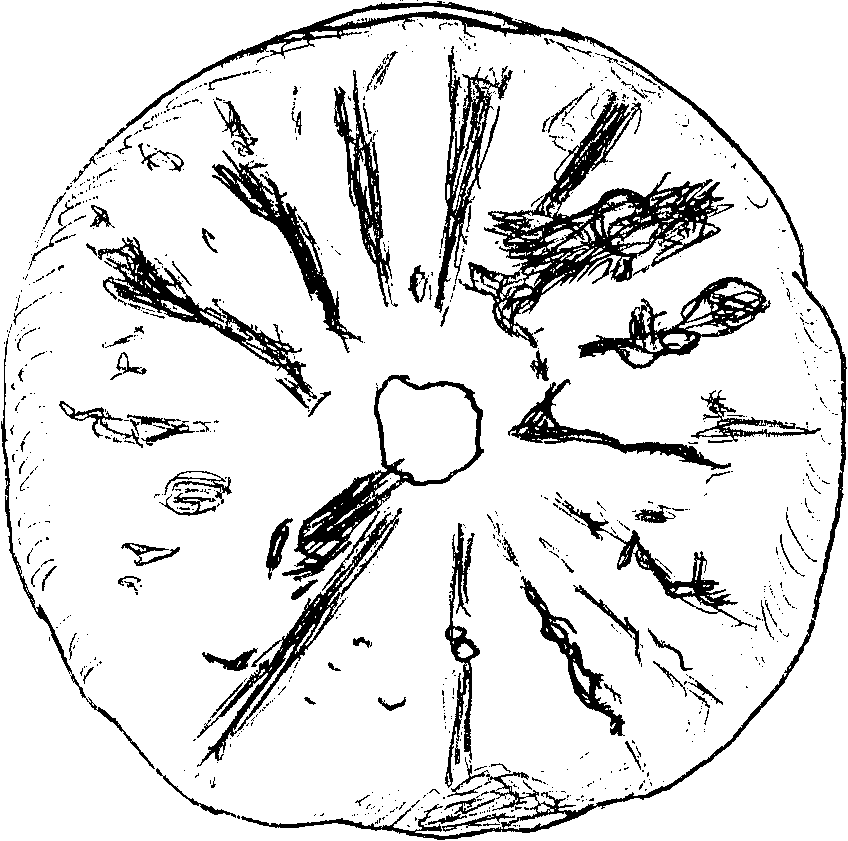 Fig. 1.
Fig. 1.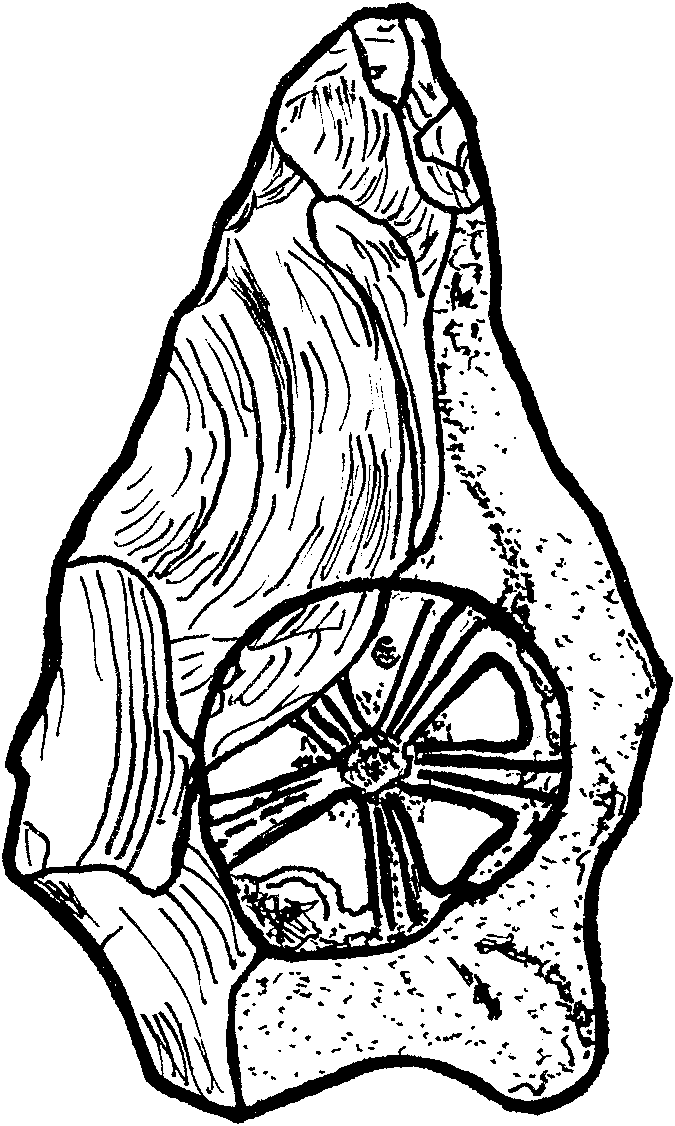 drawing resembling crinoid. Each were redrawn by the author for The Impact of Fossils on the Development of Visual Representation, Rock Art Research, 1998; and Musings on the Palaeolithic Fan Motif, Exploring the Mind of Ancient Man, 2006. The former paper—which demonstrated continuity of
drawing resembling crinoid. Each were redrawn by the author for The Impact of Fossils on the Development of Visual Representation, Rock Art Research, 1998; and Musings on the Palaeolithic Fan Motif, Exploring the Mind of Ancient Man, 2006. The former paper—which demonstrated continuity of 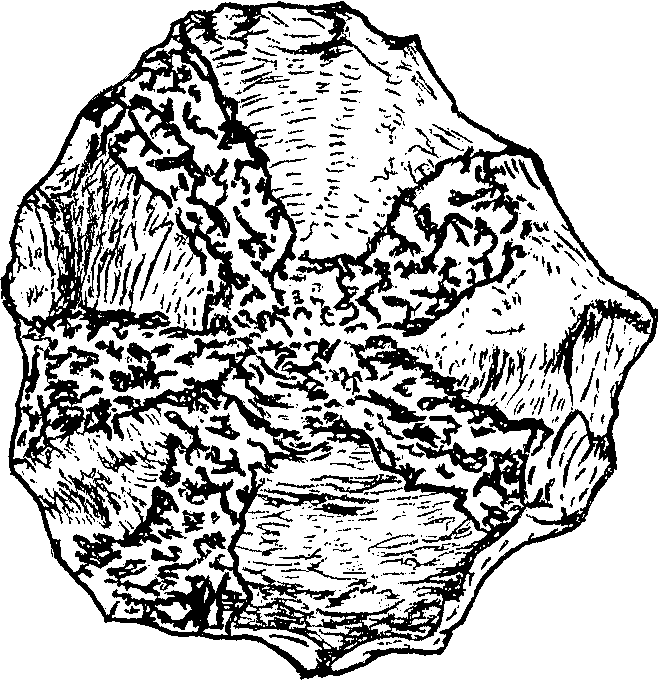 human mental ability through time—was blocked by mainstream science while now-debunked neurological fad papers catering to the Darwinian presumption that early humans were less intelligent
human mental ability through time—was blocked by mainstream science while now-debunked neurological fad papers catering to the Darwinian presumption that early humans were less intelligent 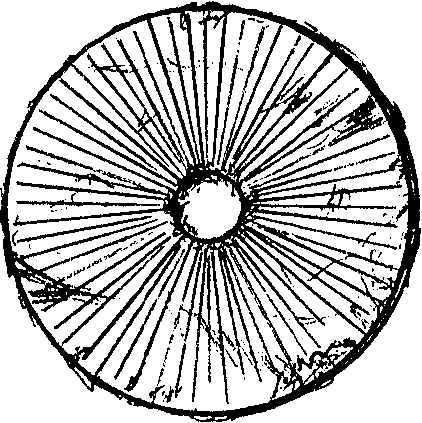 than us received instant publication. Similarly, public awareness of the abundance of living fossils is blocked in biology and paleontology as it does not support physical Darwinism.
than us received instant publication. Similarly, public awareness of the abundance of living fossils is blocked in biology and paleontology as it does not support physical Darwinism.
